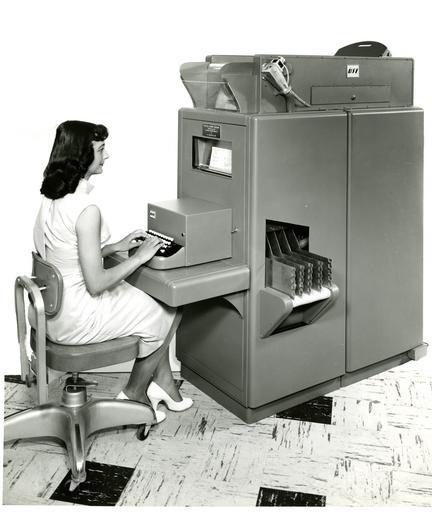MAKE A MEME
View Large Image

| View Original: | RabinowJacob_013.jpg (4641x5501) | |||
| Download: | Original | Medium | Small | Thumb |
| Courtesy of: | commons.wikimedia.org | More Like This | ||
| Keywords: RabinowJacob 013.jpg Delivered to the US Post Office Dept in August 1958 The system was on display at the Museum of American History and was later transferred to the Postal Museum Early in 1958 the Rabinow Engineering Corp received a contract from the US Post Office Dept for the design and fabrication of a five-destination Outgoing Mail Sorter This system was to present letter mail to an operator one envelope at a time so that the operator could read and type in the 5-digit zip code The machine would then convert this zip code to a bar code and print it on the back side of the envelope so that it could be rapidly read and sorted by an automated scanning system at the destination The five outgoing mail regional destinations were northeast southeast northwest southwest and other The outgoing letters were dropped on to give moving conveyor belts to speed them on their way to the distribution depot in the appropriate part of the country The Rabinow Engineering Corp was already deeply involved in the design and fabrication of the incoming mail sorting system which had 100 destinations and a local conveyor system to distribute these letters to collection buns for the appropriate zip code Since the incoming mail sorter had a higher priority the progress on the outgoing mail sorter was progressing very slowly Since delivery of the outgoing mail sorter was scheduled for August 1958 the Rabinow Engineering Corporation decided to subcontract this sorting system to the Automation Division of US Industries Inc provided they could meet the required delivery date This contract was awarded in April 1958 with 120 days for the design fabrication and testing of this system The one additional feature to be included was an optically coded typewriter keyboard that had just been patented by Jacob Rabinow In 1957 Jacob Rabinow's company Rabinow Engineering designed a mechanical coding and sorting system for the U S Post Office Based on similar work Rabinow had done previously for the Census Bureau the system for the Post Office consisted of a conveyor belt cart designed to carry 12 envelopes in separate compartments Each compartment in the cart was accompanied by an escort memory The escort memory consisted of a shaft carrying a series of nylon code wheels Each of the 134 wheels could move laterally into one of two positions With this combination more than 8000 in decimal notation binary numbers could be set Twelve keyboard operators would read envelope addresses and set the positions of the code wheels The wheels were supported on a track also composed of binary elements When the encoded compartment hit the same encoded position on the track the shaft dropped triggering a door release in the compartment holding the envelope The envelope then fell into the appropriate pocket About 600 of the letter sorting machines were built and used by the Post Office In later operations optical character recognition technology replaced the keyboard operators and the mechanical escort memory was replaced by computer memory Reference Inventing for Fun and Profit Jacob Rabinow San Francisco Press San Francisco CA 1990 pp 100-138 National Institute of Standards and Technology 8/1/1958 National Institute of Standards and Technology PD-USGov-NIST PD-USGov Postal equipment ZIP codes National Postal Museum | ||||